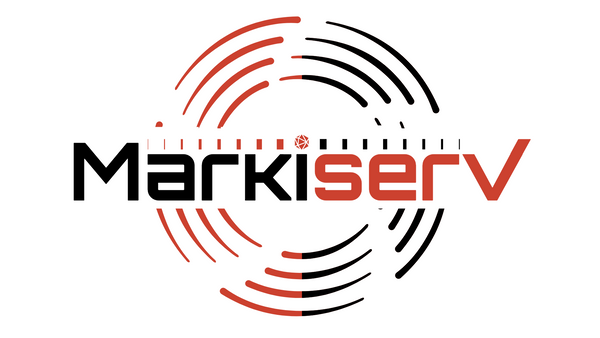
How SaaS Organizations Can Revolutionize Their Marketing Strategy in 2025
Share
In the competitive SaaS (Software as a Service) industry, marketing strategies must evolve continually to stay ahead of the curve. SaaS companies are reported to spend up to as much as 50% of their budgets on marketing efforts. With that competition, it is important to really standout. As we enter 2025, the landscape for SaaS organizations is more dynamic than ever, with new technologies, shifting customer expectations, and increasing competition reshaping the way companies attract, convert, and retain customers. This guide outlines actionable steps SaaS organizations can take to elevate their marketing strategies, improve customer acquisition, and build stronger, lasting relationships with their user base.
Understanding the Current SaaS Marketing Landscape
Before diving into strategies, it's important to evaluate the current SaaS marketing trends and challenges. SaaS organizations operate in a subscription-based ecosystem where the emphasis is on recurring revenue. This model makes customer retention as vital as acquisition.
Key trends shaping SaaS marketing in 2025 include:
- Personalized Customer Journeys: Customers expect tailored experiences across all touchpoints.
- AI-Driven Insights: Leveraging artificial intelligence for predictive analytics and customer segmentation.
- Freemium Models: Offering limited services for free to encourage upgrades to premium plans.
- Content as a Growth Tool: High-value educational content remains central to building trust and authority.
- Sustainability and Social Responsibility: Ethical branding increasingly matters to today's buyers.
Understanding these trends will guide SaaS organizations in designing strategies that resonate with their audience.
Crafting a Results-Driven Marketing Budget
Budgeting is a cornerstone of any marketing strategy, but it requires a unique approach in the SaaS space. Here are steps to allocate resources effectively:
- Analyze Past Performance: Use historical data to identify high-performing channels and optimize ROI.
- Prioritize Retention: Allocate significant resources to customer success initiatives, such as onboarding and personalized outreach.
- Invest in Technology: Spend wisely on marketing tools for automation, analytics, and CRM systems to streamline processes.
- Plan for Flexibility: The SaaS market evolves rapidly. Maintain a flexible budget to test emerging trends or channels.
- Allocate for Content Marketing: Whether it's blogs, webinars, or whitepapers, creating valuable content drives organic traffic and builds trust.
An optimized marketing budget ensures every dollar contributes to growth and retention.
Leveraging AI and Data Analytics
Artificial intelligence (AI) is no longer a "nice-to-have" but a "must-have" in SaaS marketing. AI tools can process massive amounts of data to provide actionable insights.
Use Cases for AI in SaaS Marketing:
- Predictive Customer Behavior: AI can analyze patterns to predict churn risks or upsell opportunities.
- Automated Personalization: Dynamic content and email campaigns tailored to individual user preferences.
- Chatbots for Customer Engagement: AI-driven chatbots enhance customer service and streamline lead generation.
- Advanced Segmentation: Break down your audience into highly specific niches for targeted campaigns.
SaaS companies adopting AI-driven strategies gain a competitive edge by making data-backed decisions and delivering superior user experiences.
Optimizing Content for Lead Generation
Content marketing is a powerful tool for SaaS companies, but not all content is created equal. To maximize impact:
- Develop Educational Resources: Publish blogs, eBooks, and tutorials that solve your audience's pain points.
- Focus on SEO: Optimize content for keywords your target audience searches for at various stages of the buyer journey.
- Create Case Studies: Showcase how your software has delivered results for real clients.
- Host Webinars and Virtual Events: These platforms allow deeper engagement and establish authority in the field.
- Repurpose Content: Turn webinars into blog posts, blogs into infographics, and so on to maximize value.
The goal is to create a content ecosystem that drives organic traffic and nurtures leads through the sales funnel.
Harnessing the Power of Customer Success
Customer success is not just a retention tool—it’s a marketing asset. Happy customers are your best advocates, and their recommendations carry immense weight.
Key Strategies to Drive Customer Success:
- Onboarding Excellence: Ensure new users understand how to derive maximum value from your platform.
- Proactive Support: Use AI tools to detect potential issues before customers report them.
- Loyalty Programs: Reward long-term customers with discounts or exclusive features.
- Encourage Reviews: Positive reviews on platforms like G2 or Capterra can influence potential buyers.
Satisfied customers amplify your brand and reduce churn, making customer success investments crucial for sustainable growth.
Integrating Social Proof and Community Building
In 2025, SaaS brands that prioritize community-building will stand out. Customers want to feel part of something larger, and a strong community can foster loyalty.
Actionable Ideas for SaaS Organizations:
- Online Forums: Create spaces where users can share tips, feedback, and experiences.
- Gamification: Use leaderboards or badges to motivate customers to engage.
- User-Generated Content (UGC): Feature client testimonials, success stories, and product use cases.
- Social Media Advocacy: Leverage your community to spread the word about your brand.
Building a community adds a human element to your SaaS brand and encourages organic growth.
Embracing Subscription-Based Marketing Services
Subscription-based marketing agencies can be a game-changer for SaaS organizations looking to scale efficiently. These agencies offer consistent support without the high overhead costs of building an in-house team.
Advantages of Subscription-Based Services:
- Cost Efficiency: Fixed monthly rates simplify budget planning.
- Expertise on Demand: Access to skilled professionals across design, content, and SEO.
- Scalability: Easily adjust your subscription as your needs evolve.
- Speed to Market: Fast turnaround times help you capitalize on trends quickly.
By partnering with a subscription-based agency, SaaS companies can focus on core business operations while leaving marketing execution to the experts.
Diversifying Marketing Channels
SaaS companies must avoid over-relying on a single marketing channel. Diversification ensures resilience and maximizes reach across different customer segments.
Channels to Explore in 2025:
- Influencer Partnerships: Collaborate with influencers who have a strong following in your niche.
- Podcast Sponsorships: Podcasts offer a captive audience and are growing in popularity among decision-makers.
- Account-Based Marketing (ABM): Target specific high-value accounts with tailored campaigns.
- Video Marketing: Leverage YouTube and short-form platforms like TikTok to explain complex features or share success stories.
- Affiliate Programs: Incentivize others to promote your software for a commission.
A multi-channel approach not only enhances brand visibility but also mitigates risks associated with over-dependence on a single platform.
Measuring Success Through KPIs
For any marketing strategy to be effective, it’s essential to measure its performance against defined Key Performance Indicators (KPIs).
KPIs SaaS Companies Should Track:
- Customer Acquisition Cost (CAC): The cost of acquiring a new customer.
- Customer Lifetime Value (CLV): The total revenue generated by a customer over their lifetime.
- Churn Rate: The percentage of customers who cancel their subscriptions.
- Engagement Metrics: Website traffic, email open rates, and social media interactions.
- Net Promoter Score (NPS): Measures customer satisfaction and likelihood to recommend.
Regularly reviewing these metrics ensures your marketing efforts align with business goals and provides insights for improvement.
Final Thoughts: Scaling SaaS Marketing Success
The SaaS industry is a fast-moving space where innovation is key to staying competitive. To level up your marketing strategy in 2025, focus on personalized user experiences, integrate advanced analytics, build a community, and embrace diverse marketing channels. SaaS organizations that adopt these practices can expect improved customer acquisition, retention, and overall growth.
By maintaining a customer-centric approach and staying agile, your SaaS company can thrive amidst industry challenges and opportunities.
Conclusion: Future-Proofing Your SaaS Marketing Strategy
2025 is poised to be a transformative year for SaaS marketing. By staying agile, leveraging technology, and putting the customer first, SaaS organizations can rise above the noise and secure long-term success.
Key takeaways include prioritizing personalization, investing in customer success, adopting AI tools, and considering subscription-based marketing agencies. With a strategic approach, your SaaS organization can thrive in this ever-changing landscape.
Helpful Links for Further Learning:
SaaS Marketing Strategies That Actually Work
This HubSpot article outlines effective SaaS marketing strategies, from leveraging free trials to email marketing and customer retention tips. A must-read for SaaS marketers looking for actionable insights.
SaaStr
SaaStr is a leading community and resource hub for SaaS founders and executives. It offers articles, podcasts, and events focused on scaling SaaS businesses effectively. Whether you're looking to optimize your sales funnel or enhance your customer success strategies, SaaStr provides actionable insights and networking opportunities.
HubSpot's SaaS Marketing Guide
HubSpot provides comprehensive guides and tools tailored for SaaS marketing, including inbound strategies, lead nurturing, and customer retention techniques. Their resources help SaaS companies attract, engage, and delight customers through effective content marketing and automation.
